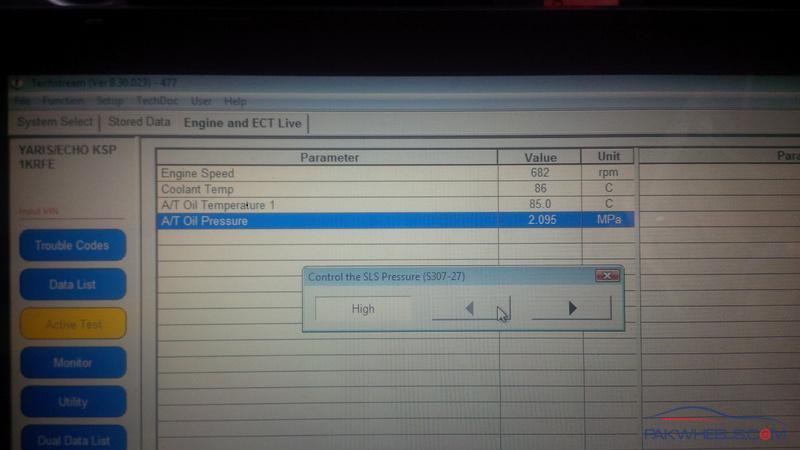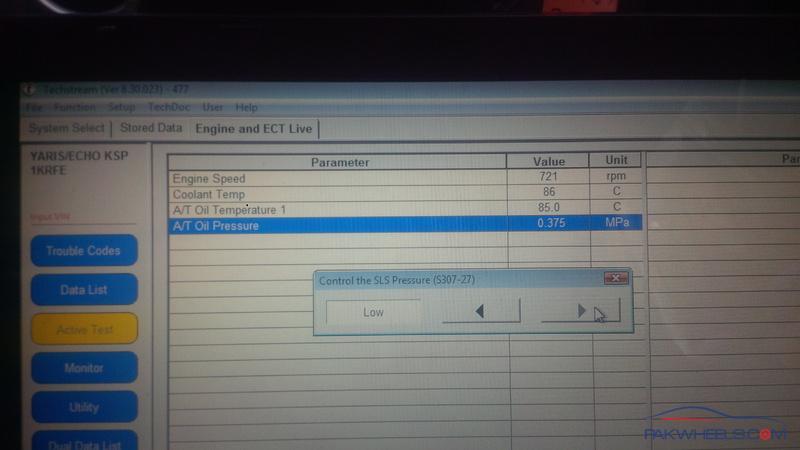Hi every one well i was quite busy for past few days so was inactive on the forum.
As I Promised to some fellow members to start a new Thread related to Automatic Transmissions Valve body assy services. So Here we are.
Today I will share and discuss the problem's and their related repair procedures in common Toyota CVT Transmissions. Which some time can be fatal for the transmission itself and can cause severe drive ability problems and ends up in complete transmission failure.
Many of the people here just go for the routine maintenance and change their vehicle basic lube's i.e Engine oil, Transmission oil , CVT Transmission Oils.
And think they had done their best to prevent the damages which can occur due to overclocked mileage interval oil change's and are on safe side.
Which is quite practical for daily routine lay man's terms.
\But these vehicle's which had CVT Transmissions installed in them requires more sophisticated diagnosis and comprehensive testings. Which shows us the actual health of these CVT Transmissions before doing any sort of Maintenance like Fluid Replacement or any sort of Calibration (Pressure Calibration).
These Testing's include's the on board CVT Fluid pressure monitoring and Fluid temperature Monitoring.
Which shows us the actual health and transmission performance values.
The question arouse in mind of a common person is. how can we test them?
a:
Should we install a pressure gauge or some thing like that to monitor the Oil Pressure like the old conventional Toyota / Lexus Transmission's?
b:
Or we install a temperature Gauge in between the Oil Pressure line to monitor the Temperature Values like the old Toyota/ Lexus Transmission's which dont had these sensors aboard on them.?
The answer is a simple NO. Because these New Gen Vehicles had on board Oil Pressure Sensor's, and fluid Temperature Sensors. Whom Values can Easily be monitored through Compatible Scan Equipment's and Also the Testings can be done to evaluate the transmission health and performance check's.
Now coming back to our topic
It is necessary to observe these 2 readings before any of the maintenance like Transmission Fluid Replacement is carried out.
The first one is the Oil Temperature.
Usually When we drive a Vehicle the oil temperature raises according to the Driving Conditions. If More Load is carried on the vehicle ( If Vehicle is driven at WOT or aggressively) the temperature of Trans Fluids raises and at the same end it does cools down with the help of the ATF Cooler which are of 2 types 1:Water to Oil. Or 2nd:Air to Oil or in some cases Both of the Methods are adopted to keep the fluid temperature as low as possible because as the temperature of the fluid raises more past then the 100 C it start's to loose its strength and lubrication power and can damage the Transmission due to over heating and non lubrication.( depends upon the Fluid Type ) .
So if we drive the same vehicle normally with partial Load Driving. The Fluid Temperature stays in normal range which can be different for different Vehicle's Make and Climatic condition's. So by observing the Fluid temperature on idle we can determine the actual condition and health of the transmission.
If the temperature is abnormal like on higher side then there must be some thing wrong which is causing the temperature to stay at higher range's.
and we had to trace up the cause of the higher temperature's.
Some time it can be raised due to Faulty Oil Cooler or restriction in oil cooler tube's or circuit.
And it also can be due to Low Oil Pressure.
Because there is an Oil to Cooler By pass valve in the Transmission Valve Body assy which opens at different oil pressure configuration and let the Oil Pass Through it to be cooled down for further use.
Now we will walk through the basic Oil Pressure system and its Major key role in ATM and CVT Transmissions.
The Cvt and every ATM Transmissions runs on Fluid pressure. By variating the pressure the transmission can change the Gear Ratio's and the vehicle is moved in forward or reverse direction.
If the Fluid pressure Drop's below the certain normal point which is mentioned by the manufacturer than the vehicle had very huge lags and difficulty to move in any direction. Hence results in complete Transmission Failure.
The Problem now a days arouse in local Toyota CVT equipped vehicles in (Toyota Vitz, Axio , Fielder and other Toyota CVT Equipped vehicles).
now a days starts from minor drive ability problem which starts from Minor Engine Braking effect when driving below 40 KM/H if the Throttle pedal is released the transmission starts to brake immediately and lower down the speed.
Which is quite abnormal for these cvts. This problem starts when the CVT Fluid starts to deteriorate and become unusable.
But unfortunately the driver is unable to determine the signs And keep on driving and follows the strict oil change interval ranging from 30K to 40K.
The end result is the CVT Fluid is unable to keep the Pressure maintained and the Start clutch & Braking Clutch's Packs and CVT Drive Belts starts to wear out.
The debris from them is usually collected on the Oil Pan Catch Magnets which catches the small Microscopic and larger Metallic particle's along with Clutch pack's small particle's which are not metallic in nature.
Then there is a time when the pan magnets cannot Catch those small Clutch pack particles and those particles passes through the Main Strainer aka( Transmission Filter) and passes through it hence clogging the sophisticated internal mechanism of Valve body assy which is the brain of the transmission and is responsible for the major Gear shifting , Pressure variation , and coasting and torque converter lockup operation and many more.
hence that residue jams the movement of those valve's which had very low clearance in between them and the valve Body Walls.
Blocking the movement and the end result's start's from the A/T oil pressure decreasing down which more decreases by the time and quantity of residue form inside which blocks the passages become more and more dense. As we know that the the A/T and CVT Transmissions are depending upon the Hydraulic Oil Pressure. when the oil pressure decreases the internal parts of the transmission starts to wear out more quickly than normal conditions and resulting in poor performance and some time fatal transmission failure's.
If we by the time when the residue is formed in the Transmission valve body assy Change / Replace the Oil i.e CVT or A/T transmission fluid it doesn't help to make the situation better and doesn't increases the Oil pressure as the main mechanism is blocked with the residue in the Valve body assy.
Hence we will see the Wear particles in the Oil Pan Catch magnets after few hundred kilometers of oil change which indicates us about the wear problem still exists and is unresolved and the transmission still suffers from excessive wear.
So Always inspect these pan catch magnets before performing any kind of maintenance job in these vehicle's first of all hook up the Scan equipment and see the readings of Oil Pressure and Oil Temperature's and observe them to find the health of your vehicle Transmission.
There are some Active testings features in scan equipment's which can test the oil pressure both on higher end and on lower end on idling speed to determine whether the oil pressure is in normal range or not.
As I am working on the toyota vehicles for so many years these are my findings which i am mentioning below that how I deal with them when I encounter these problem's and how I perform the repair service.
NOTE:
Please note that these sophisticated Transmission services are not meant for a DIY( Do It Yourself) Project or for Untrained Personals. If done Improperly it can result's in complete transmission Failure. And most of the time 10 Out of 9 vehicle's transmissions Fails due to improper Trained personals which I had observed personally in the Local market.
Another thing the Local Toyota Dealer ships are also not providing these repair services and avoiding these CVT general Maintenance Jobs. so beware of the consequences and do not attempt to service it from untrained mechanics or personals.
Here we are with the vehicle it is Toyota Vitz 2012 KSP130 series equipped with 1KR-FE along with K410 CVT Transmission.
Upon diagnostic and routine Scan job we find that the A/T Oil Pressure was not in the normal range and was a bit low. see the highlighted text in the picture.
The High Pressure was on 2.095 MPa which is equal ant to 303 Psi and on lower test it was in range
as shown in HIGH Active Test Shown in 2nd picture.
So We decided to rectify this low pressure problem present in the CVT Transmission and Drained the CVTF Fluid from the oil Pan and Opened the oil pan for inspection.
High pres
OIL PRESSURE BEFORE SERVICING WAS 2.095 MPa 303psi
OIL PRESSURE AFTER SERVICING WAS 3.415 MPa 495psi
Total Difference was of 192 PSI which is a quite huge improvement.
Before servicing picture's are on page one and
After servicing and reassembling pictures are on page 2
For more information and details any one can contact me at 0300-5220091

